The Atlas of Worlds is the main focus of Path of Exile 2’s endgame. It includes various systems and interconnected maps filled with challenges, loot, and special encounters. In this guide, we will go over the four core elements of the Atlas: Maps, the Skill Tree, Towers, and Bosses.
Unlocking the Atlas
To unlock the Atlas, you need to complete all three acts in Cruel difficulty and then speak to Doryani in the Vaal Ziggurat. She will help you with your Atlas progression.
Maps
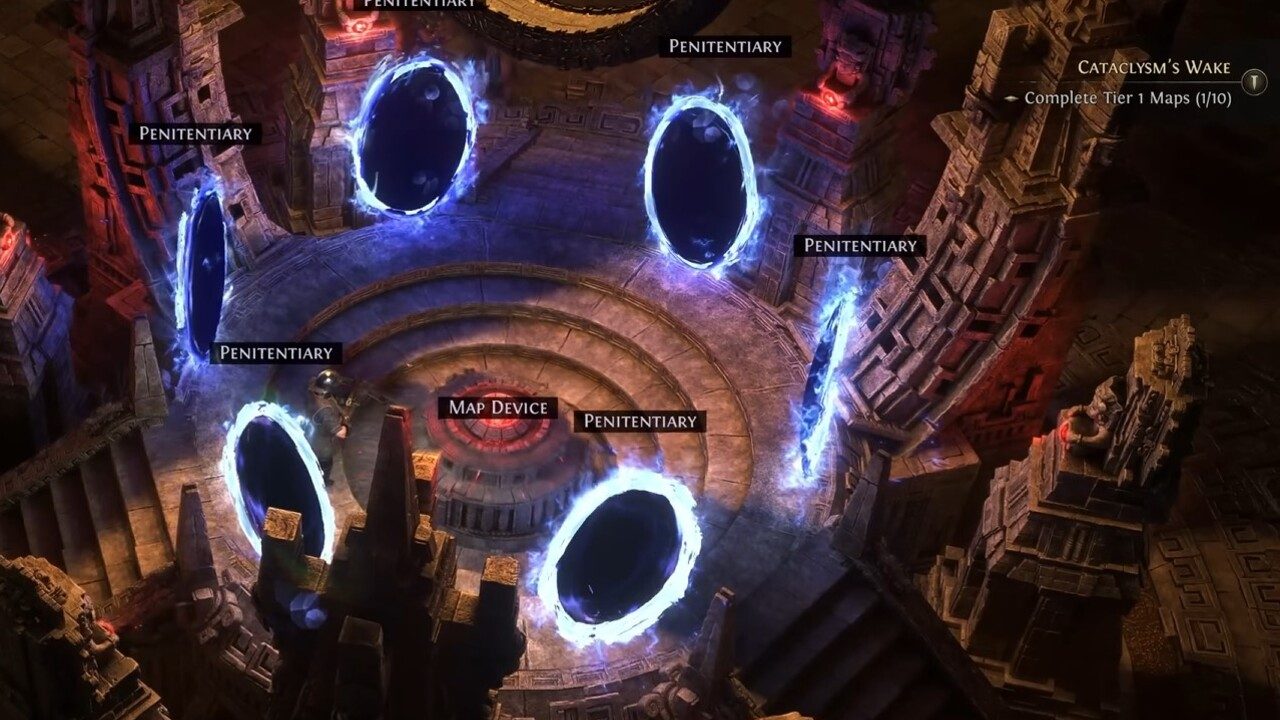
Maps are the foundation of the Atlas and the primary way to progress through the endgame. Each map offers distinct environments, enemies, and rewards.
How to Access Maps
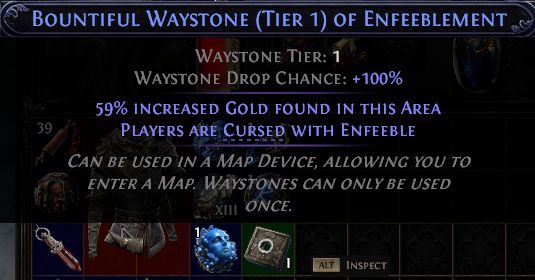
- Use Waystones, single-use consumables, to enter maps through the Map Device in the Ziggurat Refuge.
- Waystone Tiers determine monster levels and map difficulty. For example, a Tier 5 Waystone raises monster levels to 70.
- Maps feature colored portal points on the Atlas:
- Blue: Maps currently accessible.
- Grey: Maps you can still unlock.
- Green: Maps you have completed.

Endgame activities like Delirium, Ritual, Expedition, or Breach may occur in maps, but completing the primary objective, which usually means defeating all Rare and Unique monsters, is required for progression.
Crafting and Upgrading Waystones
You can modify Waystones with crafting items like Orbs of Transmutation and Orbs of Augmentation:
- Prefixes: Add rewards (e.g., increased loot, more monsters).
- Suffixes: Add difficulty (e.g., tougher enemies, reduced defenses).
Three Waystones of the same tier can be combined to craft a higher-tier Waystone!
Tougher Waystones provide better rewards and increase the likelihood of receiving higher-tier Waystone drops, which helps your map progression.
Atlas Skill Tree
The Atlas Skill Tree allows you to customize your endgame experience, giving you control over the challenges and rewards you want to prioritize.
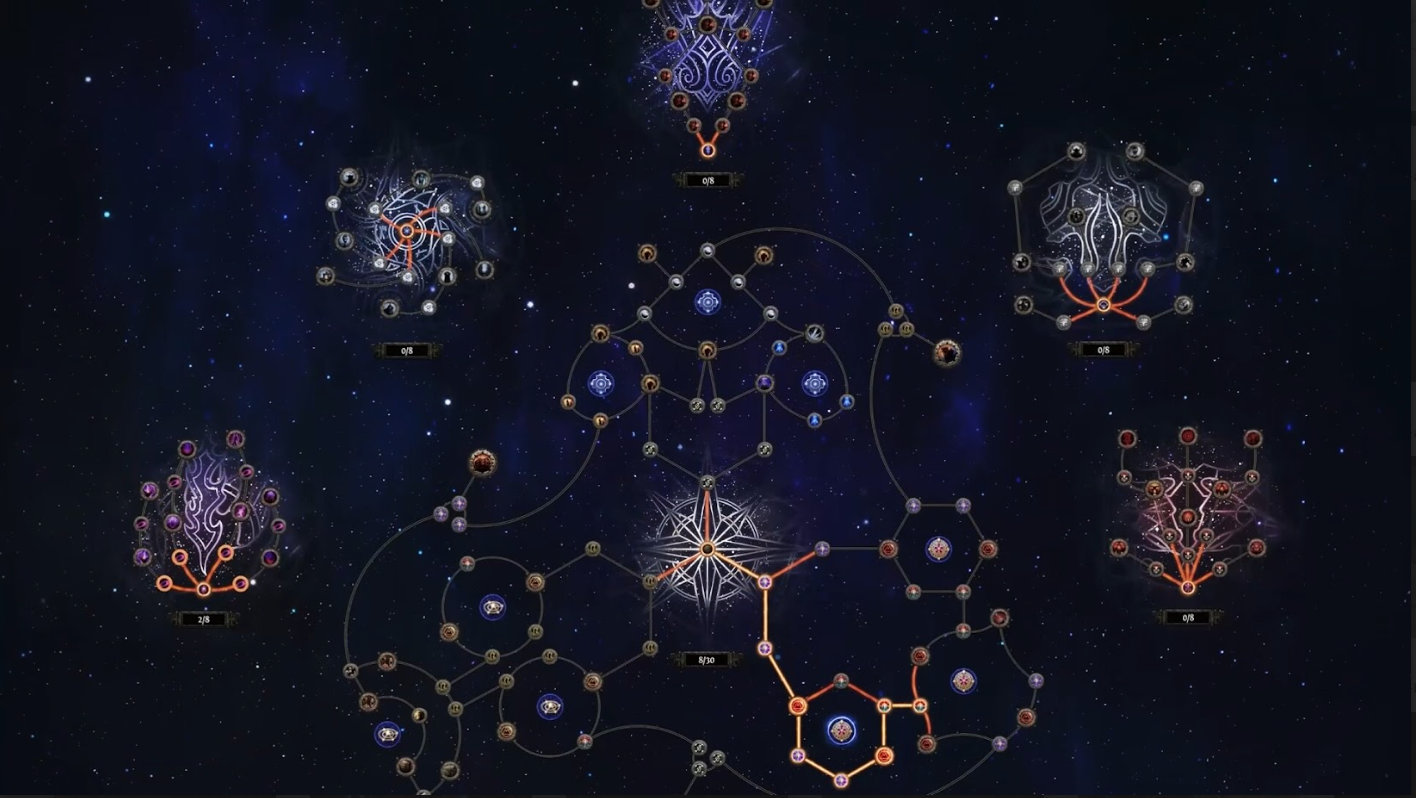
How to Get Atlas Skill Points
Atlas Passive Skill Points can be earned by completing maps and cleansing zones of corruption. Points can then be allocated to unlock specific bonuses, such as:
- Improved Mechanics: This boosts the frequency and rewards of mechanics like Strongboxes or Essences
- Map Difficulty: Adds modifiers for more challenging but rewarding maps.
- Boss Encounters: Improves the loot drops and appearance rates of bosses.
When allocating Skill Points, make sure to invest in mechanics that make sense and work with your build’s strengths. Moreover, you should focus on rewards that improve loot drops or help with efficiency. In any case, you can keep experimenting, as respec options are available to adapt your strategy.
Special Encounters
During your Atlas exploration, you can also come across various special encounters such as:
Bosses: Challenging enemies. Can range from normal map bosses to pinnacle bosses. More is explained further down.
Towers: Precursor Towers are special zones that reveal large areas and allow you to buff surrounding zones by using Tablets. These Tablets can add mechanics like Breach, Delirium, or Ritual to your maps, making them more rewarding.
Beast Corruption: Beast Corruption is a special type of corruption that affects zones within the Atlas. These zones have corrupted modifiers and offer unique challenges and rewards.
Hideouts: Hideouts are your home away from home in the Atlas. They provide a safe place to rest and prepare for your next adventure.
Nameless Seer: The Nameless Seer offers one unique item for free. You can find him in certain zones within the Atlas.
Citadels: Citadels are special map nodes on the Atlas, requiring Tier 15 Waystones to access. Complete them for unique rewards, like fragments for the Burning Monolith fight, but be careful, because you only get one attempt per Citadel.
Special Maps: There are special maps you can encounter, which provide large amounts of experience or unique rewards
Towers
Towers, also known as Precursor Towers, are very important for revealing larger sections and expanding the Atlas. Always make sure to complete towers, so you have a better overview of the area and can customize your mapping session accordingly.
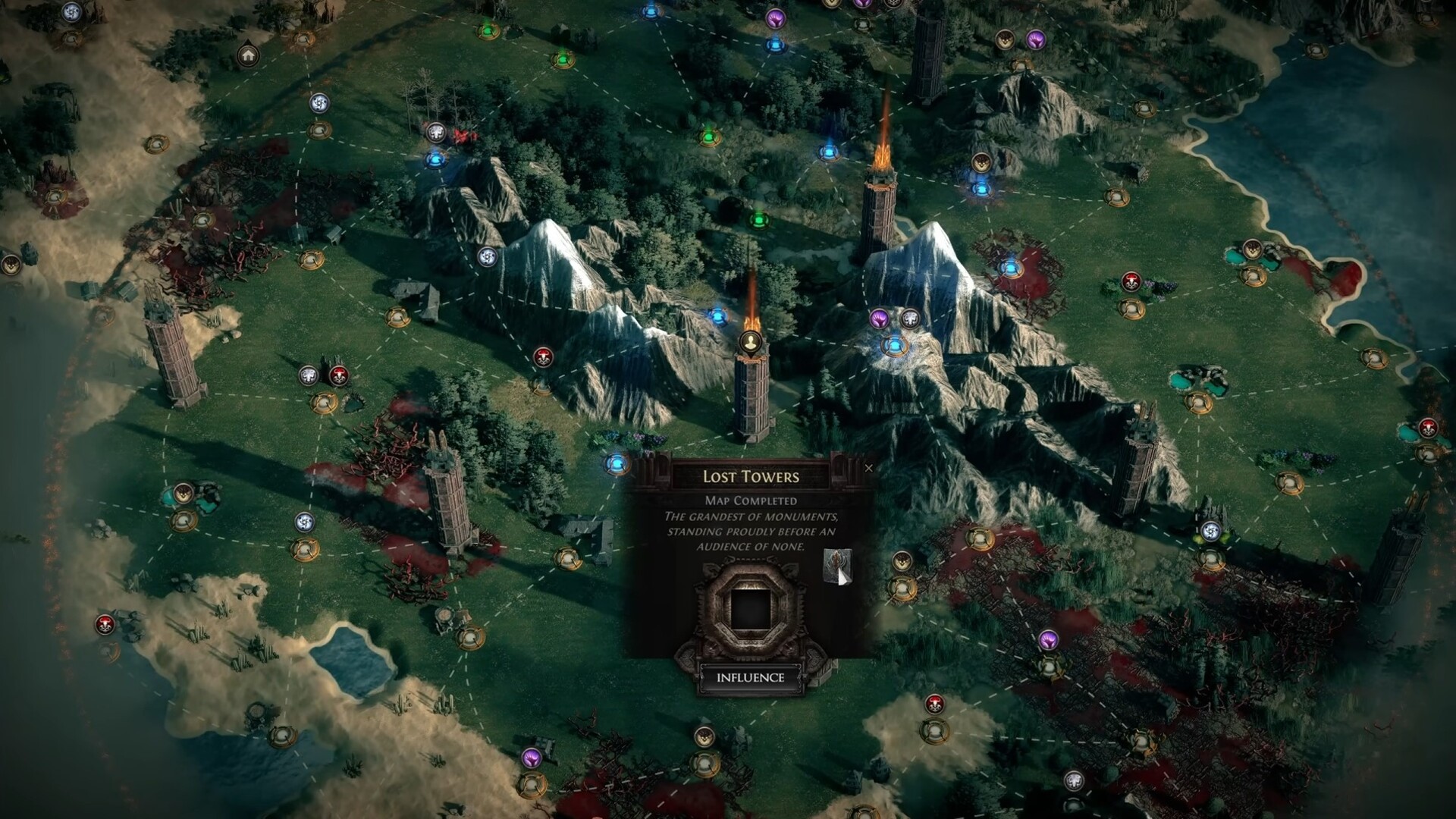
How Towers Work
- Clearing a Tower unveils a bigger region of the Atlas. This will help you navigate and plan your progression.
- Insert Precursor Tablets into Towers to amplify maps in adjacent regions.
- For example, add more Breach encounters or Ritual sites to connected maps.
- Towers can overlap their effects, which allows for highly customized map runs.
Try to farm mobs for Precursor Tablets ahead of your mapping journey so that you always have enough options for boosting your maps the way you want!
Bosses
Bosses in the Atlas range from regular Map Bosses to very challenging Pinnacle Bosses. Both offer great rewards and progression opportunities.
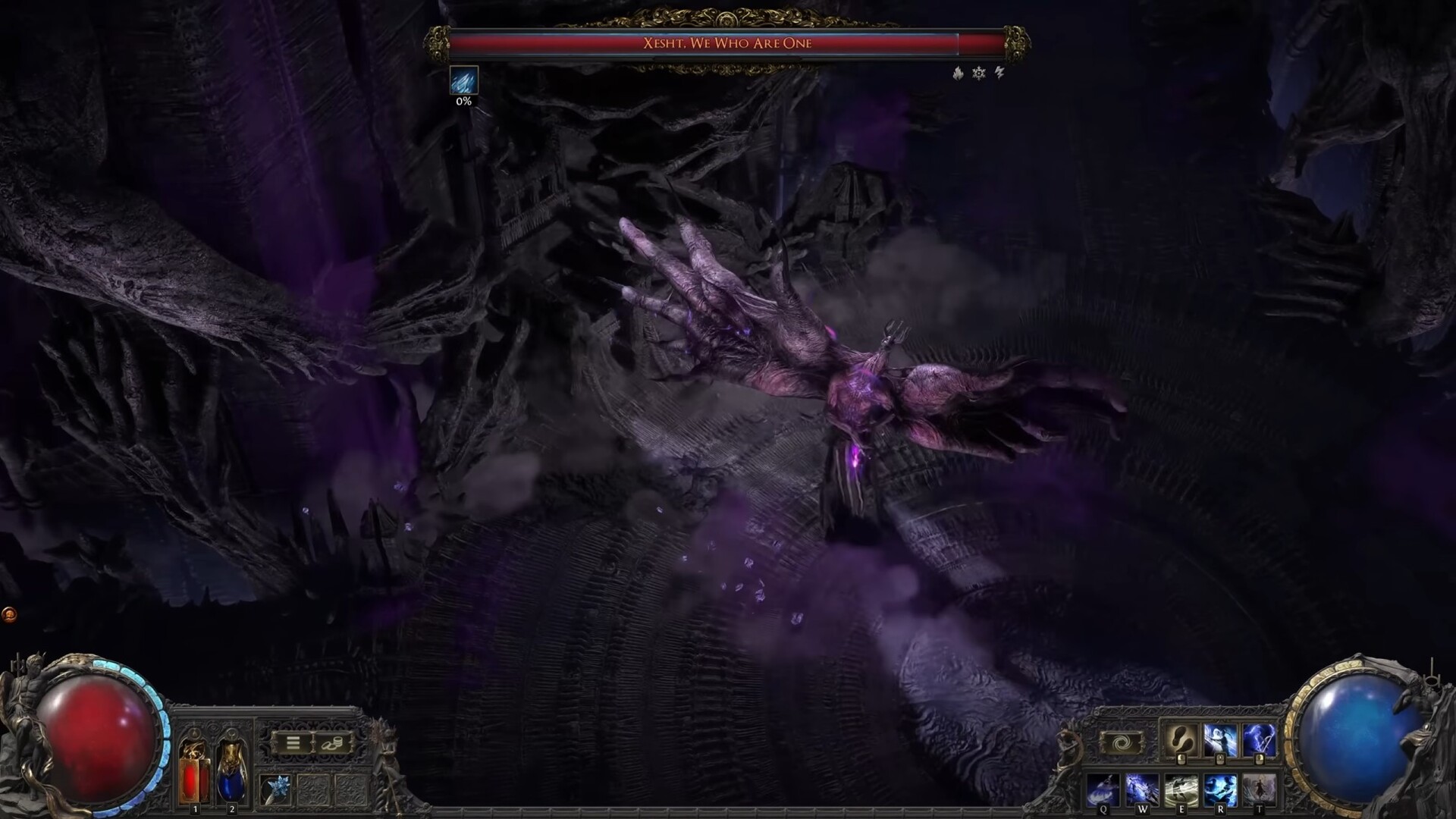
Map Bosses
Found in roughly 1 out of every 4 maps, these bosses are tougher versions of campaign bosses. Rewards include:
- Unique Loot.
- Special Atlas Tree Points for the Boss Section of the Skill Tree.
Pinnacle Bosses
In Path of Exile 2, the endgame introduces several pinnacle bosses. These are very challenging bosses that are associated with specific game mechanics and regions and are the ultimate test of skill and strategy within the Atlas. Notable pinnacle bosses include:
Breachlord Xesht, We Who Are One:
Requires crafting a Breachstone by collecting Breach Splinters from Breach encounters. This boss is linked to the Breach mechanic.
The Burning Monolith:
Requires you to collect three keys from faction leaders to access this fortress. To face the final boss, you have to make your way through the maze and fight various enemies first. The Pinnacle Boss is here.
Olroth:
Associated with the Expedition mechanic, Olroth can be found when excavating Logbook Dig Sites. Requires Logbooks, which drop from Expedition encounters within Waystones.
King in the Mists:
This boss is tied to the Ritual mechanic
Simulacrum Bosses:
Within the Delirium mechanic, you can come across hard boss fights such as Omniphobia, or Kosis, during Simulacrum encounters.
Pinnacle bosses have multiple difficulty tiers, with the highest offering the best rewards in the game!
Atlas Recap and Summary
Here is a quick recap of the core elements related to the Atlas of Worlds in PoE2:
- Maps: Use and craft Waystones to explore and complete maps.
- Skill Tree: Customize your endgame experience by improving mechanics, map rewards, and boss encounters.
- Towers: Expand the Atlas and amplify maps with Precursor Tablets.
- Bosses: Challenge Map and Pinnacle Bosses for unique loot and Atlas progression.
While this guide covers the Atlas and its core mechanics like Maps, the Skill Tree, Towers, and Bosses, there is much more to explore when it comes to the game! So make sure to check out our other guide to other endgame activities below:
 Mercenary
Mercenary Monk
Monk Ranger
Ranger Sorceress
Sorceress Warrior
Warrior Witch
Witch